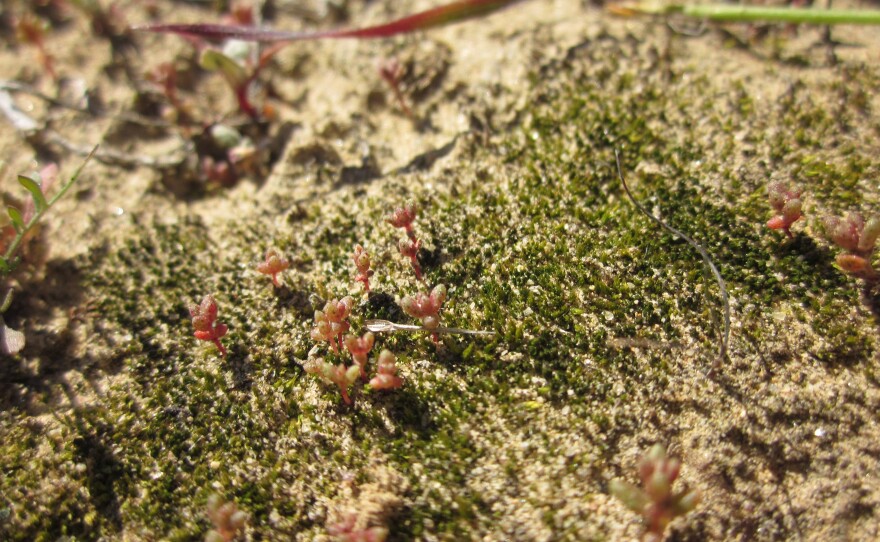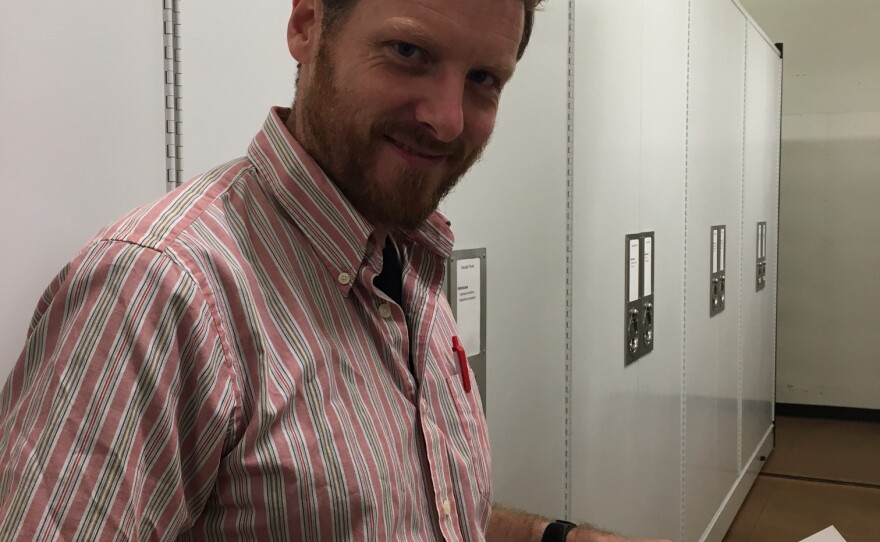Beginning in the early 1900s, scientists surveyed all the plants they could find on one of the Channel Islands, San Nicolas Island. More than 100 years later, researchers discovered many plants that had never been seen on the island before.
Matt Guilliams, a botanist at the Santa Barbara Botanic Garden who studies and catalogs the region’s plant biodiversity, opens a door to a cabinet inside the Herbarium. It’s a library for preserved plant specimens that the Garden uses for research. From inside the cabinet, he pulls out a sheet of paper with pressed plants.
“This is a specimen of Seaside Cistanthe that we collected this year,” he said.
Guilliams says he was on San Nicholas Island looking for a different plant when he spotted bright purple flowers.
“As a person with basically a deep love of California plants, I’ve always got my eyes open. And, as we were walking around on the landscape, you can’t help but notice something that’s new,” he said.
Seaside Cistanthe was previously known to be growing in the Los Angeles basin to northwestern Baja California and on seven of the Channel Islands. But it had never been seen on San Nicholas Island until this past spring.
“One of the best field days that I’ve had as a biologist and I’ve been studying the flora of California for almost 20 years,” Guilliams said.
Seaside Cistanthe is one of three native vascular plants – also known as flowering plants -- discovered over the last two years on the island. These new additions increase the known native vascular flora by 2%.
But, when it comes to native nonvascular plants – which are mosses, only ten had previously been known on San Nicholas. So, when botanist Ben Carter, assistant professor and director of the Sharsmith Herbarium at San Jose State University, recently discovered two dozen more, that increased the known nonvascular flora by 240%.
“A lot of my work out there is just establishing a baseline of which species live there and which don’t,” he said.
Carter opens up an envelope that contains a sample of one of the mosses he discovered.
“These ones are all still very much alive. So, if we put water on these, they would perk right back up. We can just put them on the tabletop, and they would come back to life,” he said.
Carter says these nonvascular plants are very important for the ecosystem of the island because they form a soil crust.
“A really thin layer on top of the soil that’s made up of likens and mosses. And what that does is it creates a living film over the top of the soil and it helps prevent erosion, which is a big problem on San Nicholas Island,” he said.
Of the 24 mosses Carter discovered on the island, one of them – Tortella Humilis – had never before been seen in California.
Since San Nicholas is virtually untouched – unlike the mainland, these discoveries paint an important picture.
“What we see on the islands is probably very representative of what the coastal California ecosystems looked like prior to human disturbance. That’s really important because it helps us understand the impact we have on the environment,” he said.
These new native plant discoveries are critical to conservation planning, says Denise Knapp, who’s director of conservation and research at the Botanic Garden.
“To understand what all the native species of the island, what the weeds are and which ones of those might be threatening the biodiversity of the island and to really help conserve that diversity and restore habitat so that the whole suite of creatures – plants to animals – can thrive,” she said.
Carter says that’s the goal.
“When we discover something new – for me, what that signifies is that we are taking a step forward in our knowledge of biodiversity and we can be that much better stewards to biodiversity,” he said.
Samples of these recently discovered flowering plants and mosses will undergo DNA analysis. They’ll be stored at the Herbarium and their data will be available online so that it can be used by scientists all around the world.






